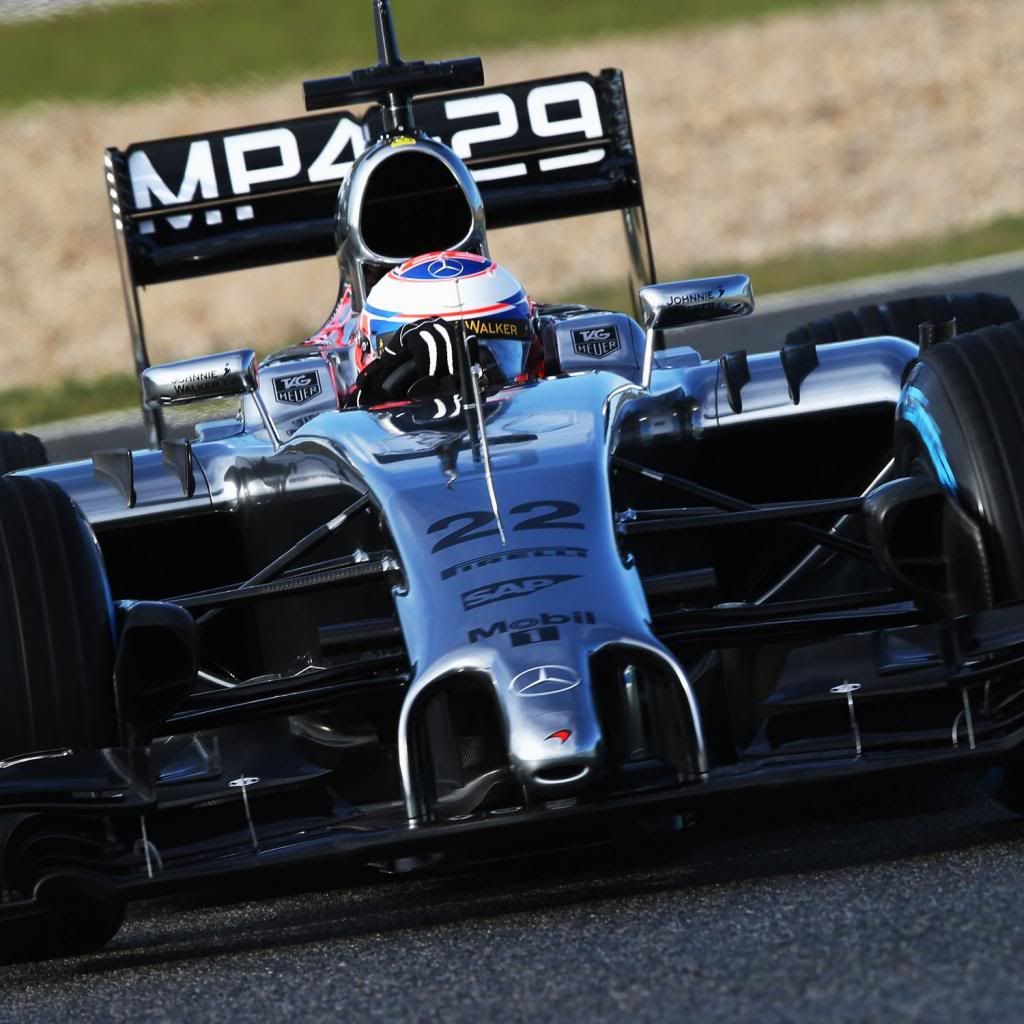- Login or Register
No account yet? Sign up

Actually, if you'd watched the Flying Lap episode with Willem Toet you would have gathered just how much of a problem simulating yaw is for CFD and windtunnels. Yes, you can simulate some sliding and a few degrees of yaw but there are still a lot of things you don't know.thestig84 wrote:I think it was on a recent episode on the flying lap webcast where they said most of the windtunnel work now days is done at an certain angle of yaw. I agree dont think its any sort of issue.Just_a_fan wrote:Interesting. I don't think yaw is an issue - it has been very vocally raised by one forum member but other than that...
That was a comical video for Comic Relief in the UK, of which a red nose is a symbol. Wasn't referring to the nose of the actual car.london_racer11 wrote:What happened to this all new front wing that "dramaticly" improved the performance??? http://news.bbc.co.uk/sport1/hi/motorsp ... 417463.stm
Very confusing how they're saying the car has no downforce, yet the video says that the downforce is much much better? please help

A small motor linked to a hydraulic pump would do it. How (extra) much force do they want to apply to the wing tips? 100-250kg? Those rods look plenty stong enough for that as they are mostly is compression.Hangaku wrote:That's not the point I was trying to make. My point was that I don't believe such a thing could be achieved in such a small package.Just_a_fan wrote:Er, no. If the wing only generates X downforce but needs X+Y force to deflect then the rods would need to supply force Y in order to give the necessary deflection.Hangaku wrote:
Indeed, if the rods could flex the wing, the wing would already be flexible enough to do so under it's own weight.
That is to say, McLaren might only be able to design and build a wing that deflects at 1deg / X+Ynewtons but the wing never generates more than Xnewtons at the required speed and thus gives less than the required deflection. Thus the rods would provide the supplemental force.
However, the device is obviously a measuring device if for no other reason than active front wing aero is illegal...
I'm not questioning the laws of physics, but I am questioning that if this was nose bump was doing what is alleged in the "article" (that motors were extending and retracting the rods) exactly how much torque do you think those little motors would need to generate to do so?

What happened to one single exit per bank?dougskullery wrote:Interesting speculation from Mark Hughes from this week's print Autosport:
"Rewind a few weeks, when [MP4-26] was expected to be competitive and there was a lot of attention around quite where its trick exhaust layout exited, for all that could be seen were U-bends.
It is out understanding that all those spaghetti pipes meet together in a ceramic box under the rear of the gearbox, and in line with the diffuser's central spat. Furthermore, te pipes divide into smaller pipes, pointing in various directions in an effort at energising the maximum area of the underfloor for downforce creation. The sequentially smaller pipes are necessary in order to minimise power losses from the complex routing of the system. Maintaining the optimum range of pressure waves to scavenge the burnt gases from the pipe is essential for maximising power. With a route so convoluted, the only way to do this is to strategically vary the diameter of the pipe along its winding length. The creation of the box and the myriad of small pipe exits has created the opportunity of spreading the routing of the gas around different parts of the floor."
Fascinating if true, and McLaren must be working around the clock in order to fix whatever's broken with what sounds like a fundamental aspect of the car's design.
My guess is that the two exhaust 'exits' are what vent into the ceramic box. Any smaller pipes after that are no longer considered exhausts, from the perspective of the regulations.imightbewrong wrote:What happened to one single exit per bank?dougskullery wrote:Interesting speculation from Mark Hughes from this week's print Autosport:
"Rewind a few weeks, when [MP4-26] was expected to be competitive and there was a lot of attention around quite where its trick exhaust layout exited, for all that could be seen were U-bends.
It is out understanding that all those spaghetti pipes meet together in a ceramic box under the rear of the gearbox, and in line with the diffuser's central spat. Furthermore, te pipes divide into smaller pipes, pointing in various directions in an effort at energising the maximum area of the underfloor for downforce creation. The sequentially smaller pipes are necessary in order to minimise power losses from the complex routing of the system. Maintaining the optimum range of pressure waves to scavenge the burnt gases from the pipe is essential for maximising power. With a route so convoluted, the only way to do this is to strategically vary the diameter of the pipe along its winding length. The creation of the box and the myriad of small pipe exits has created the opportunity of spreading the routing of the gas around different parts of the floor."
Fascinating if true, and McLaren must be working around the clock in order to fix whatever's broken with what sounds like a fundamental aspect of the car's design.